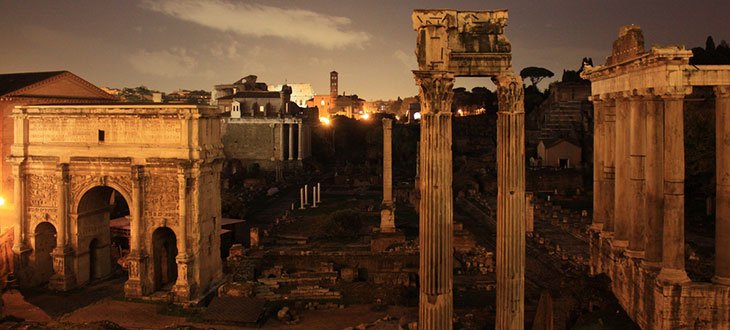Courtesy of Scrabulista, since by some miraculous fate my connection is actually working now:

http://www.insidescience.org/content/dinner-pisos/2536
Let's pretend it is 56 B.C. and you have been fortunate enough to be invited to a party at the home of Lucius Calpurnius Piso Caesoninus, a great social coup. Piso, after all, was Julius Caesar's father-in-law and a consul of Rome.
What's for dinner?
You need to prepare for pig. Archaeologists studying the eating habits of ancient Etruscans and Romans have found that pork was the staple of Italian cuisine before and during the Roman Empire. Both the poor and the rich ate pig as the meat of choice, although the rich, like Piso, got better cuts, ate meat more often and likely in larger quantities.
They had pork chops and a form of bacon. They even served sausages and prosciutto; in other words, a meal not unlike what you'd find in Rome today -- or in South Philadelphia.

http://www.insidescience.org/content/dinner-pisos/2536
